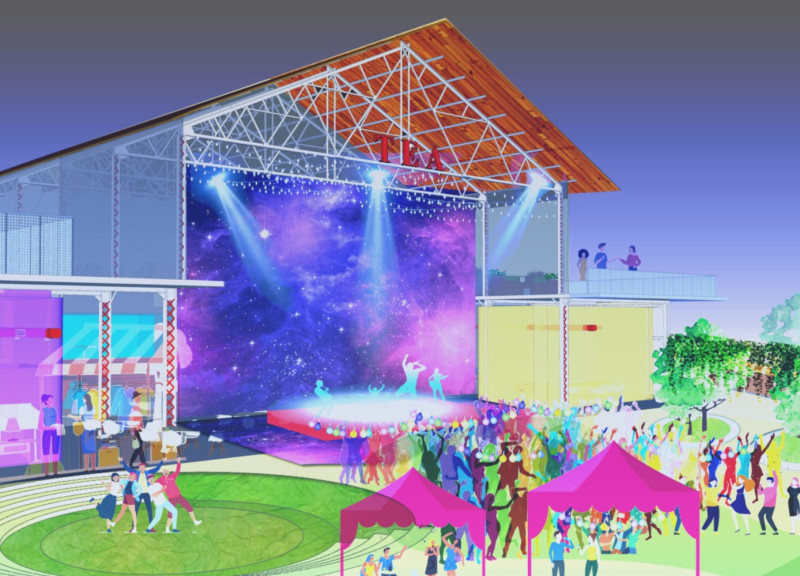5 key facts about this project
The Evolving Atelier (TEA) is situated in Whitefield, Bengaluru, India, where an existing warehouse has been adaptively reused to create a versatile workspace. The design focuses on fostering interactions among diverse users from residential, industrial, and commercial sectors. The project aims to blend into the urban environment while emphasizing user experience, sustainability, and empathetic design principles.
Urban Context and Development
TEA’s architectural framework reacts to its high-density urban surroundings, bringing together various aspects of experience-based design. Core ideas include neurodiversity and a sense of belonging, which influence how spaces are organized. The layout accommodates a variety of work styles, providing both individual and collaborative areas that can adapt to changing needs over time.
Community Engagement and Services
Community engagement is a key element of TEA, as seen in the provision of urban utility services. ATMs, pharmacies, and public restrooms are integrated to enhance accessibility for local residents. The design also follows guidelines for urban planning and utilizes tactile flooring to improve safety and wayfinding, making the space relevant and useful within the neighborhood.
Innovative Features and Sustainability
Several unique features define TEA, including green lung spaces that separate work areas from recreational sections, like a rock-climbing wall. These elements support physical well-being and promote a healthy work-life balance. Urban Digital Pods are designed to serve as flexible meeting rooms, catering to both internal users and nearby communities. The project embraces sustainability through principles aligned with WELLNESS, GRIHA, and LEED. Measures include local air diffusers, effective lighting, and automated shading to enhance comfort.
Architectural Detailing
Recreational facilities such as open-air basketball courts and rooftop event spaces encourage social interactions and community activities. The layout promotes a sense of belonging, inviting users to participate in various engagements throughout the day and evening. The media façade at TEA offers visual communication opportunities, allowing the space to reflect community events and engagements in a dynamic way. This thoughtful approach enhances the overall user experience and reinforces the project’s role within the local context.






















































